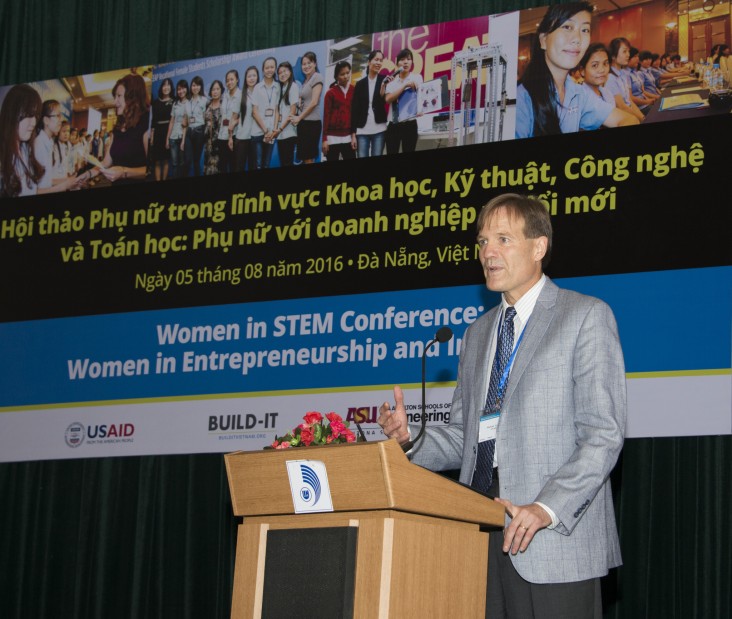
DANANG, August 5, 2016 -- Good morning and welcome to the Women in Science, Technology, Engineering, and Math Conference. USAID is committed to empowering women with a platform to ensure their voices are represented, needs addressed, and leadership potential fostered. In the words of President Barack Obama, “We… know that countries are more likely to prosper when they tap the talents of all their people. And that’s why we’re investing in the health, education, and rights of women, and working to empower the next generation of women entrepreneurs and leaders. Because when mothers and daughters have access to opportunity, that’s when economies grow, that’s when governance improves.”
In that spirit, I am proud to be here today to highlight achievements that encourage, support, and equip young women involved in all aspects of STEM. This is part of our overall commitment to workforce development through the Building University-Industry Learning and Development through Innovation and Technology (BUILD-IT) Alliance.
Fostering an open and diverse scientific community that draws from an array of unique experiences and viewpoints is a necessary step to realizing development goals. Young men and young women may innovate differently. But by bringing together varying points of view, Vietnam can build a stronger foundation around which industry can build. Unfortunately, whether in education or the workplace, the proportion of women in STEM decreases dramatically at the highest levels. Men are more likely than women to be in technological and scientific activities, information technology, manufacturing, construction, utilities and transportation, while women are concentrated in education and training, human health, and hotels. Throughout several industries, Vietnam continues to have gender bias in recruitment in sectors relating to STEM and for positions with higher salaries. In many cases employers still add written gender preference in their job advertisements and men are most often targeted for more technical and highly skilled jobs such as architects, engineers, and IT professionals, despite the fact that the performance of highly qualified women often surpasses that of men.
When we turn our attention to scientific research, we see that only one-fifth of key national science and technology programs were conducted with women as scientific leaders or with a high percentage of women researchers. Of over a thousand Vietnamese patent applications, less than 9 percent were from women. At the same time, there’s a glass ceiling for women to gain professorships. Even though half of all university faculty are women, only 11 percent gain professorships, with those in the STEM fields considerably lower. They report that scholarships for advanced study become increasingly limited for women academics to excel beyond the initial level.
Nevertheless, times are changing and society is becoming responsive. There’s a recognition that STEM careers offer women the opportunity to engage in some of the most exciting realms of discovery and technological innovation that are also the high-tech, high-wage jobs of the future. As a result, increasing opportunities for women in these fields are an important step towards realizing greater economic success and equality for women across the board.
While the initial choice to join STEM is important, what’s paramount is the engagement of young women in formal and informal environments, encouraging mentoring to support women throughout their academic and professional experiences, and supporting efforts to retain women in the STEM workforce.
While the BUILD-IT Alliance is a newer project, through collaboration and support with Intel – we have already provided 436 scholarships for female students pursuing technical education in Vietnamese vocational colleges. In addition, the Women in Engineering Master’s Fellowship program will support two Engineering graduate students entering Arizona State University this fall.
Today’s conference will kick off the first Women in Engineering Projects in Community Service competition here in Vietnam. These focus on solving real world problems with innovative solutions to societal and community issues.
Today and in the coming years I hope to hear insights into how you can foster leaders and role models, as well as opportunities and challenges you may face as women working in or entering STEM fields. I want to learn about the critical competencies you need as women in the STEM fields to advance your career. I know that many of you have already committed to increasing the number of women and underrepresented minorities who pursue STEM studies. I hope that you help to engage younger students before they reach university in hands-on math and science learning to spark an interest in STEM careers.
I wish you all success, stimulating conversations, and prosperity in moving forward.







Comment
Make a general inquiry or suggest an improvement.